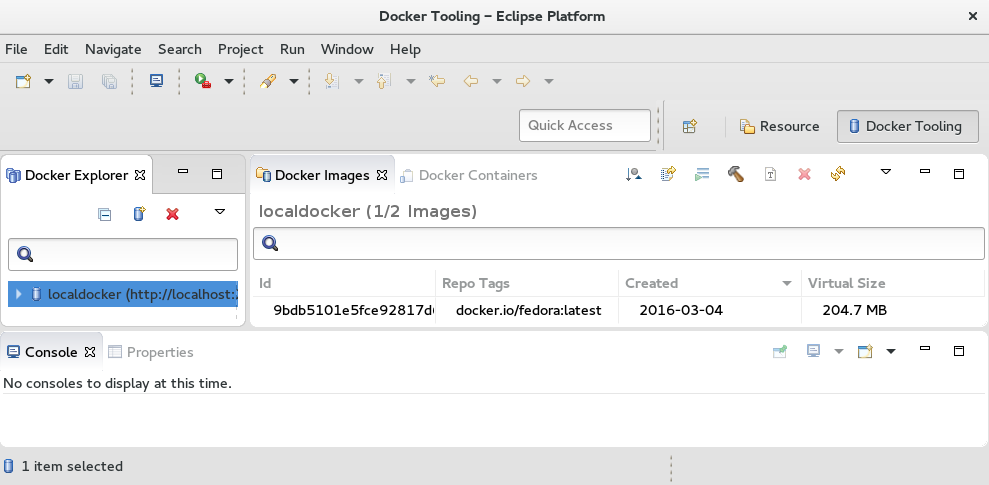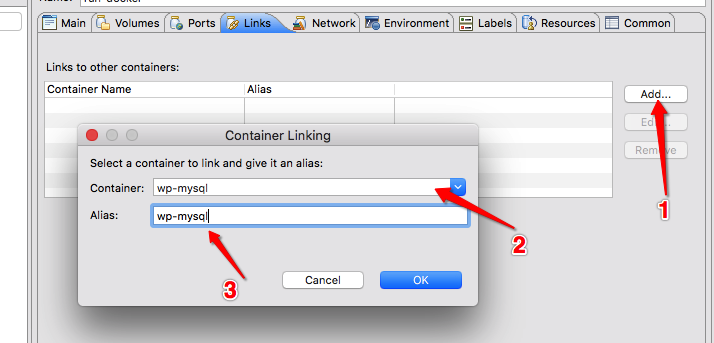

You have to start/restart your tomcat manually, only remote debugging is possible, you don't have your logs within your IDE console. With the -v option you can only mount a host directory within the container and not the other way around.Ĭurrently the only solution I see would be mounting the webapps directory of the container and drop my war file in here, which is in my point of view pretty unproductive. Sadly that feature doesn't seem to exist. I was now hoping to be able to link the contents of the containers /opt/tomcat directory to an directory within my host.

2.) Create a docker-compose.yml in the project directory. Open a terminal with the docker env variables via Kitematic -> File -> Open Docker Command Line Terminal. With the last change, Kitematic don’t use any cert or key file to connect to the remote Docker Host.
#Eclipse docker setup local kitematic install#
Youre probably used to docker ps, and docker. 1.) Install Docker Toolbox to get docker, docker-compose, and the Kitematic GUI. 17: host: 192.168.2.114, 18: port: 2375, Just use an unencrypted connection for the first step, change the protocol from https to http, use the IP address of the Raspberry Pi, and don’t forget to change the port number to 2375.
#Eclipse docker setup local kitematic software#
Docker Machine has its own command-line client docker-machine and the Docker Engine client, docker. In simple terms, docker allows us to package a software along with all the needed libraries and dependencies and deploy them into a local or remote linux host instance. What is Kitematic Its a graphical tool that lets you see what is running in your local Docker environment. Docker Quickstart Terminal To start using Docker on Windows, click on Docker Quickstart Terminal. Once it has been successfully installed, it can be verified by the three new icons on your desktop, namely, Docker Quickstart Terminal, Oracle VirtualBox, and Kitematic (Alpha). To install the Docker engine, we need to use a Docker machine. Accept all other default settings and install Docker Toolbox. Therefore the tomcat base directory has to be available to setup.Ĭurrently I have a docker debian image with tomcat installed on /opt/tomcat. This component is used to run multiple Docker containers at once by running a single command, which is docker-compose up. The developers are using IDEs like Eclipse and IntelliJ.ĭuring development you configure your tomcat environment within the IDE so you can automatically deploy and debug your code. We are developing Java Applications which are deployed on tomcat. I'm really impressed about the possibility to have a environment within development that could be the same as in production!Īt the moment I want to start small and begin to enhance the development process. The last couple of days I spend a lot of time digging into docker.


 0 kommentar(er)
0 kommentar(er)
